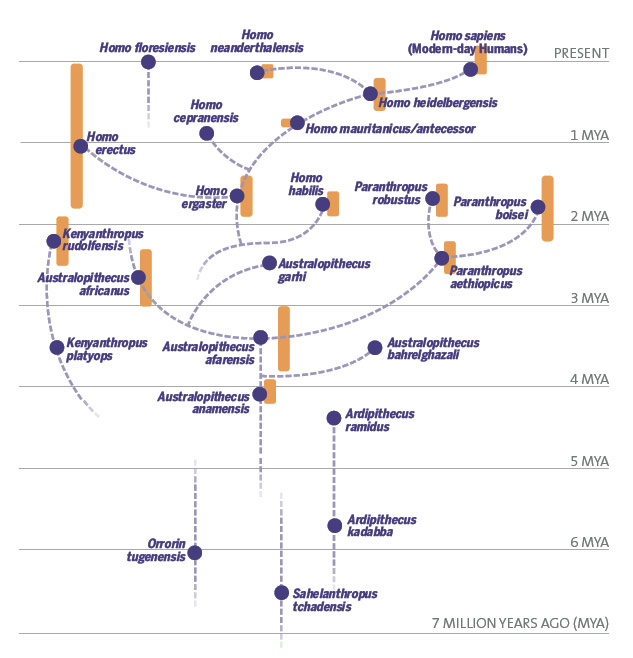Apr 20 2011
A New Hominin – A. sediba
Following the branching bush of human evolution is getting increasingly difficult. When I studied human evolution in college, things were much simpler. There were a few Australopithecus species followed by a few Homo species, leading to modern humans. It was recognized at the time that these fossil species probably did not represent a nice clean straight line to Homo sapiens, but it seems the family tree has become much bushier than was imagined at the time.
 Here is a recent representation of the hominin family tree. We have added more species of Australopithecus and Homo, plus new genuses of Kenyanthropus and Paranthropus (not even including older genuses that predate Australopithecus).
Here is a recent representation of the hominin family tree. We have added more species of Australopithecus and Homo, plus new genuses of Kenyanthropus and Paranthropus (not even including older genuses that predate Australopithecus).
Now researchers have announced the discovery of yet another species of early hominin, about 2 million years old – likely a late species of Australopithecus named A. sediba. They discovered four individuals – two adults, a child and an infant, who likely fell into a “death trap” in a cave in what is now Malapa, South Africa.
Each bit of fossil evidence is like a piece to a complex puzzle. As more pieces fit into place, however, the picture becomes more complex and more questions are generated. We are still at the stage where new evidence generates more questions than answers, and we have no idea how complex the final picture that emerges will be.
The new discovery is no exception. A. sediba has a mixture of modern (Homo) and primitive (Australopithecine) traits. It has a small brain like a primitive Australopithecus, but has pelvic structure and hand features that are more modern than other members of the genus.
It should also be noted that the first members of the Homo genus arose about a million years before the age of these specific specimens – so these individuals do not represent a population that in ancestral to our genus.
As always, there are multiple ways to interpret this data. It is possible that A. sediba is the ancestral Australopithecine species that led to Homo – either directly, or closely related to that species (yet to be discovered). In this case, these individuals would be later representatives of that species. Species often persist, even for millions of years, after other species branch off from them. So it is always possible to find representative of an ancestral species that are more recent than species that evolved from them.
It is also possible that A. sediba is a separate line of Australopithecines that did not lead to Homo, but developed some similar features. In this case the “modern” features in A. sediba would be analogous to (similar to, but not ancestral to) the modern feature, rather than homologous to (related through evolutionary derivation) the modern Homo features.
Another possibility that was not mentioned in the Science article that I linked to is that these individuals, and possibly A. sediba as a species, or perhaps just one breeding population, represent the results of interbreeding between Homo and Australopithecus species. In this case modern features would have literally mixed with the more primitive features together in A. sediba.
This adds a new layer complexity to our picture of the human family tree (or any family tree). When species divide the separation is not clean, and later remixing of genes is not only possible but probable. There is genetic evidence, for example, of later mixing of genes between human ancestors and chimpanzee ancestors after the split. So it’s not a stretch to think that hominin populations were at least occasionally interbreeding .
I suspect there are many more hominin species and subspecies to be discovered. The picture that is emerging is fascinating, if it is becoming increasingly difficult to keep track of it all. I’ll just have to muddle through.






